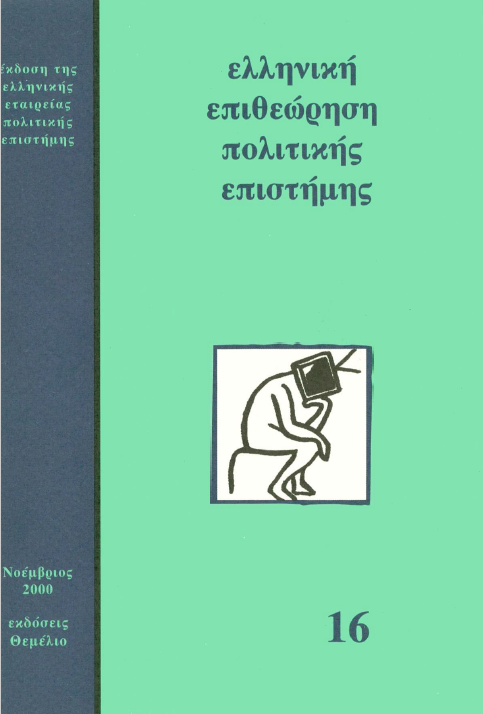Contemporary mass communications and political communication
Abstract
This article examines changes in the political communication domain in regard to the developments of the communications technologies within the theoretical framework of the «medium theory». Especially, it focuses on the changes caused by the heavy use of television and personal computers in the public communication of political parties. It deems that both television and the PCs tend to homogenise political communication in various aspects, and it argues that the rise of new political professionals is associated with these developments in the field. Regarding the exponential rise of the Internet, it claims that it may not lead to a form of direct democracy, but it will certainly affect politics and democracy in general and communication theory in particular.
Article Details
- How to Cite
-
Παπαθανασόπουλος Σ. (2017). Contemporary mass communications and political communication. Greek Political Science Review, 16, 11–33. https://doi.org/10.12681/hpsa.15184
- Section
- Articles

This work is licensed under a Creative Commons Attribution-NonCommercial-ShareAlike 4.0 International License.
Authors who publish with this journal agree to the following terms:
Authors retain copyright and grant the journal right of first publication with the work simultaneously licensed under a Creative Commons Attribution licence that allows others to share the work with an acknowledgement of the work's authorship and initial publication in this journal.
Authors are able to enter into separate, additional contractual arrangements for the non-exclusive distribution of the journal's published version of the work (e.g. post it to an institutional repository or publish it in a book), with an acknowledgement of its initial publication in this journal.
Authors are permitted and encouraged to post their work online (preferably in institutional repositories or on their website) prior to and during the submission process, as it can lead to productive exchanges, as well as earlier and greater citation of published work (See The Effect of Open Access).



